当前位置:网站首页>Re signal writeup
Re signal writeup
2022-07-06 17:23:00 【TiggerRun】
Signal
0x0 introduction
I failed to work out this problem during the competition , I used OD Dynamic debugging , Analyze that the startup program is initialized 0x72 Array , And it contains a 12 The branch switch Nested in a loop , It didn't work out in the end , Let's answer this question today .
0x1 Check the shell
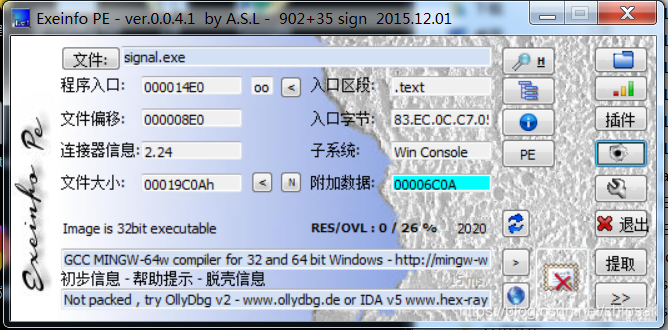
Shell less , And it is not enabled at compile time ASLR technology , Very friendly, huh .
0x2 analysis main

Learn to be smart this time , First open the disassembly auxiliary plug-in to view the pseudo code ( This is of great help to understand assembly logic ).
You can see in the main Function first called __main()
Then copy memory to variables v4, And then v4 Incoming vm_operad()
Easy to think of ,&unk_403040 It's through __main() Got , And then vm_operad() Is calculating flag, And in puts() Medium output .
0x3 Take a look. __main()
GO TO:0x0040176F
adopt OD Dynamic debugging ,F8 Step through and find that there is no change in the register , So I think the next operation is similar to __main() Functions are irrelevant .
0x4 Memory copy
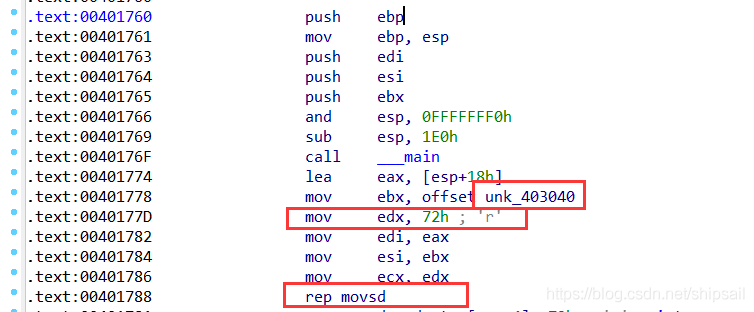
rep movsd According to the definition of encyclopedia , assignment edx Time , namely 0x72 Time
among esi The address pointed to is 0x403040, as follows 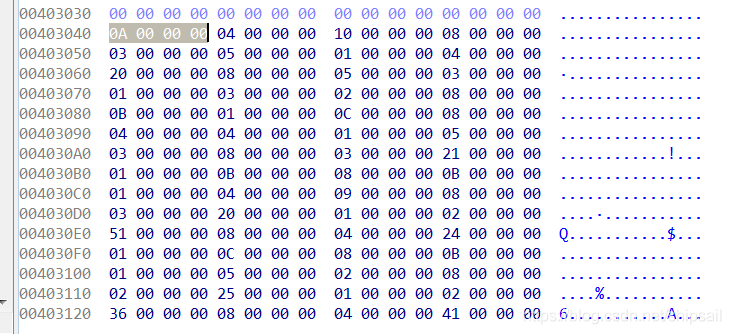
Let's look at disassembly code .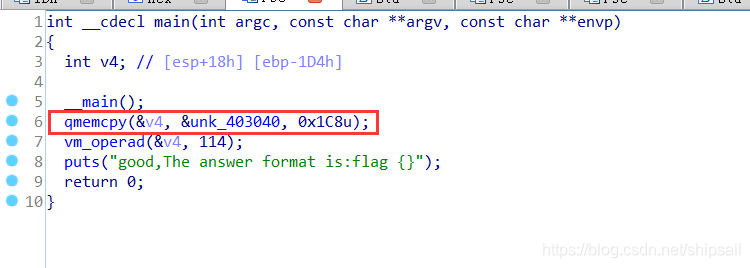
Memory copy , from 0x403040 Copy to variable v4, The size is 0x1C8 Bytes .
There may be questions , In assembly code is 0x72, Why is the reverse exchange compiled 0x1C8 Well ?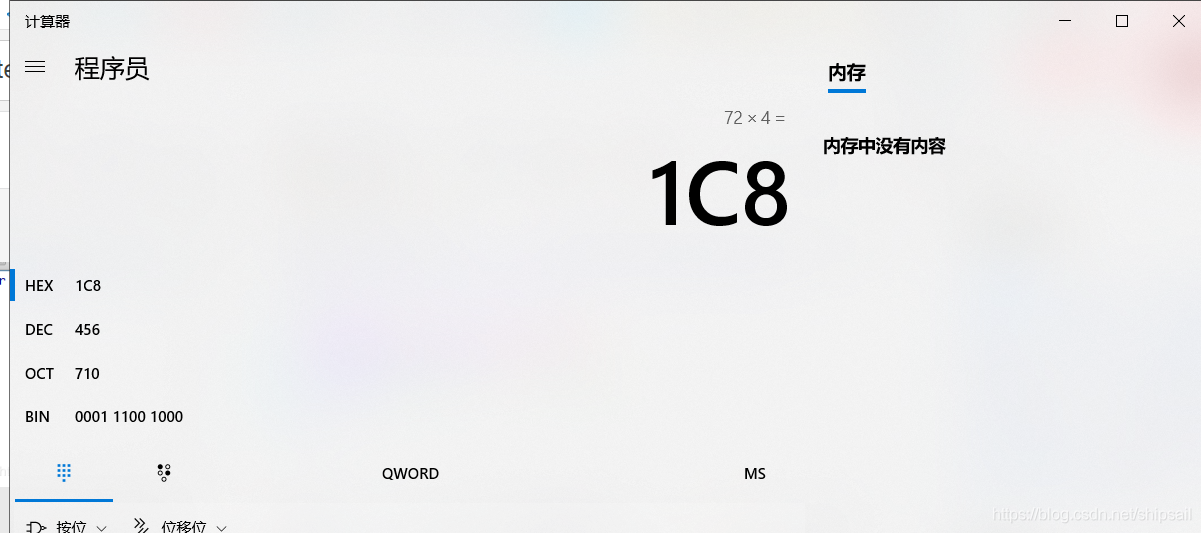
It's very simple , Because the data type is DWORD Occupy 4 Bytes , This can be seen from the data hard coding above .0x1C8 = 0x72 * 0x4
There is also a very strange phenomenon ,puts Only string templates are passed in , There is no incoming storage flag The address of …
0x5 analysis vm_operad
Use IDA Automatic disassembly vm_operad(int *a1, int a2)
int * a1 What is passed in is the previous v4 The first address ,a2 Constant 114
After some adjustments and modifications, I got the source code as follows :
#include<iostream>
#include<windows.h>
#include<string>
using namespace std;
size_t read(char *a1)
{
size_t result; // eax
printf("string:");
scanf("%s", a1);
result = strlen(a1);
if ( result != 15 )
{
puts("WRONG!\n");
exit(0);
}
return result;
}
int vm_operad(unsigned int *a1, int a2)
{
int result; // eax
char v3[100]; // [esp+13h] [ebp-E5h]
char v4[100]; // [esp+77h] [ebp-81h]
char v5; // [esp+DBh] [ebp-1Dh]
int v6; // [esp+DCh] [ebp-1Ch]
int v7; // [esp+E0h] [ebp-18h]
int v8; // [esp+E4h] [ebp-14h]
int v9; // [esp+E8h] [ebp-10h]
int v10; // [esp+ECh] [ebp-Ch]
v10 = 0;
v9 = 0;
v8 = 0;
v7 = 0;
v6 = 0;
while ( 1 )
{
result = v10;
if ( v10 >= a2 )
return result;
switch ( a1[v10] )
{
case 0:
case 9:
continue;
case 1:
v4[v7] = v5;
++v10;
++v7;
++v9;
break;
case 2:
v5 = a1[v10 + 1] + v3[v9];
v10 += 2;
break;
case 3:
v5 = v3[v9] - LOBYTE(a1[v10 + 1]);
v10 += 2;
break;
case 4:
v5 = a1[v10 + 1] ^ v3[v9];
v10 += 2;
break;
case 5:
v5 = a1[v10 + 1] * v3[v9];
v10 += 2;
break;
case 6:
++v10;
break;
case 7:
if ( v4[v8] != a1[v10 + 1] )
{
printf("what a shame...");
exit(0);
}
++v8;
v10 += 2;
break;
case 8:
v3[v6] = v5;
++v10;
++v6;
break;
case 10:
read(v3);
++v10;
break;
case 11:
v5 = v3[v9] - 1;
++v10;
break;
case 12:
v5 = v3[v9] + 1;
++v10;
break;
}
}
}
int main(){
unsigned int a[] ={
0x0A,0x04,0x10,0x08,0x03,0x05,0x01,0x04,0x20,0x08,0x05,0x03,0x01,0x03,0x02,0x08,0x0B,0x01,0x0C,0x08,0x04,0x04,0x01,0x05,0x03,0x08,0x03,0x21,0x01,0x0B,0x08,0x0B,0x01,0x04,0x09,0x08,0x03,0x20,0x01,0x02,0x51,0x08,0x04,0x24,0x01,0x0C,0x08,0x0B,0x01,0x05,0x02,0x08,0x02,0x25,0x01,0x02,0x36,0x08,0x04,0x41,0x01,0x02,0x20,0x08,0x05,0x01,0x01,0x05,0x03,0x08,0x02,0x25,0x01,0x04,0x09,0x08,0x03,0x20,0x01,0x02,0x41,0x08,0x0C,0x01,0x07,0x22,0x07,0x3F,0x07,0x34,0x07,0x32,0x07,0x72,0x07,0x33,0x7,0x18,0x7,0xffffffa7,0x7,0x31,0x7,0xfffffff1,0x7,0x28,0x7,0xffffff84,0x7,0xffffffc1,0x7,0x1e,0x7,0x7a};
cout << sizeof(a) / sizeof(a[0]);
vm_operad(&a,114);
return 0;
}
The analysis here is a little confused , Because I don't know what we want flag, We just got the source code , And this code has so many branches , It feels the same as I used OD Debugging makes no big difference .
Through visualization , You can know , If you want to reverse solve, there are certain difficulties , because swich There are too many branches !
Through the obtained disassembly code ,v3v4 For the length 100 Array of characters , because There is no flag, So guess v3 v4 Maybe it's what we want flag.
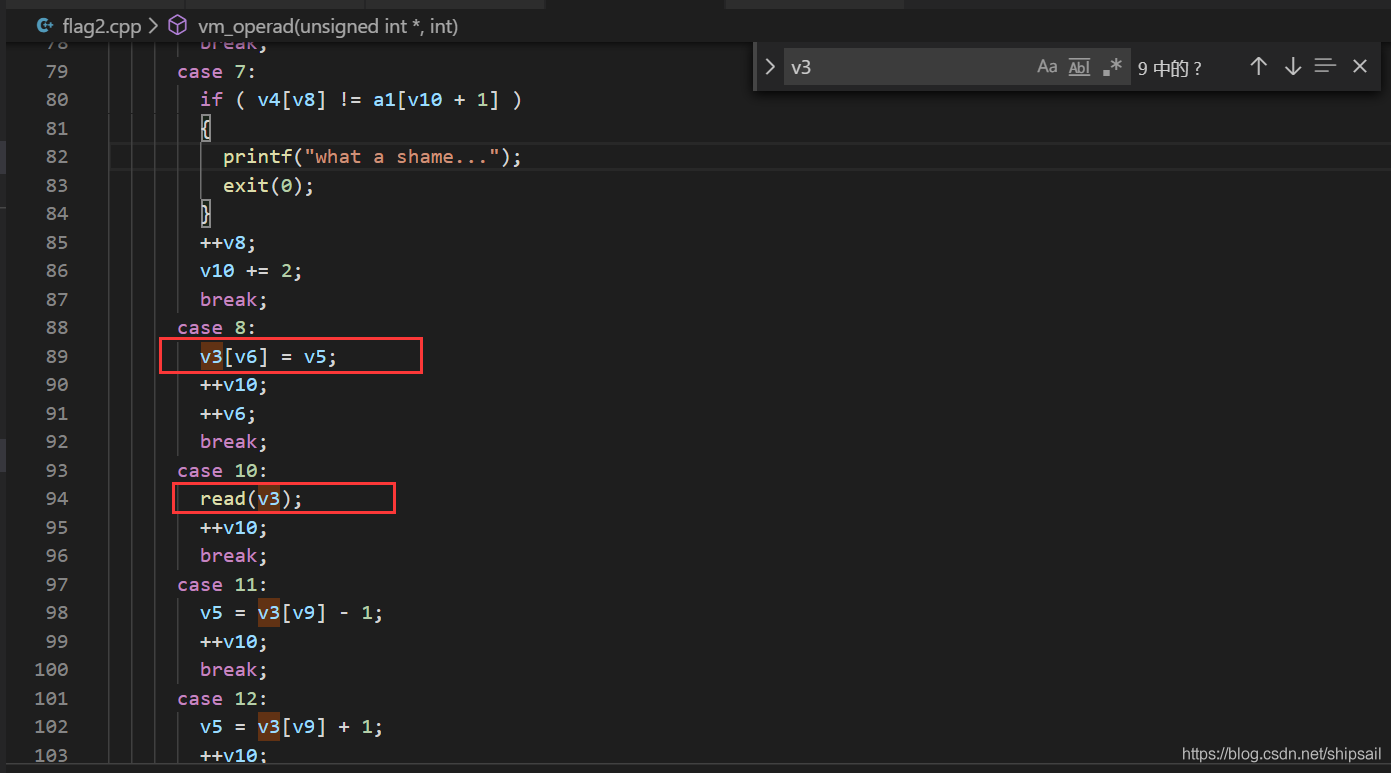
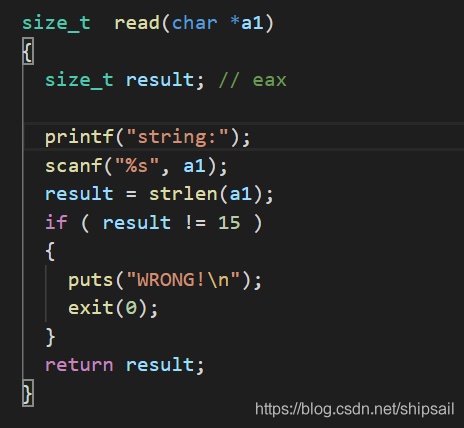
v3 Variable in case8 Changed in , stay case10 Is entered , The input length is 15

v4 stay case 1 Changed in ,case7 Compare him with a1 Compare elements ,a1 The elements in are known , For convenience , I put a1 Renamed as array.
I will be here printf() and exit() notes , And in read() Random input in 15 Characters 

After many times of execution, we found the law .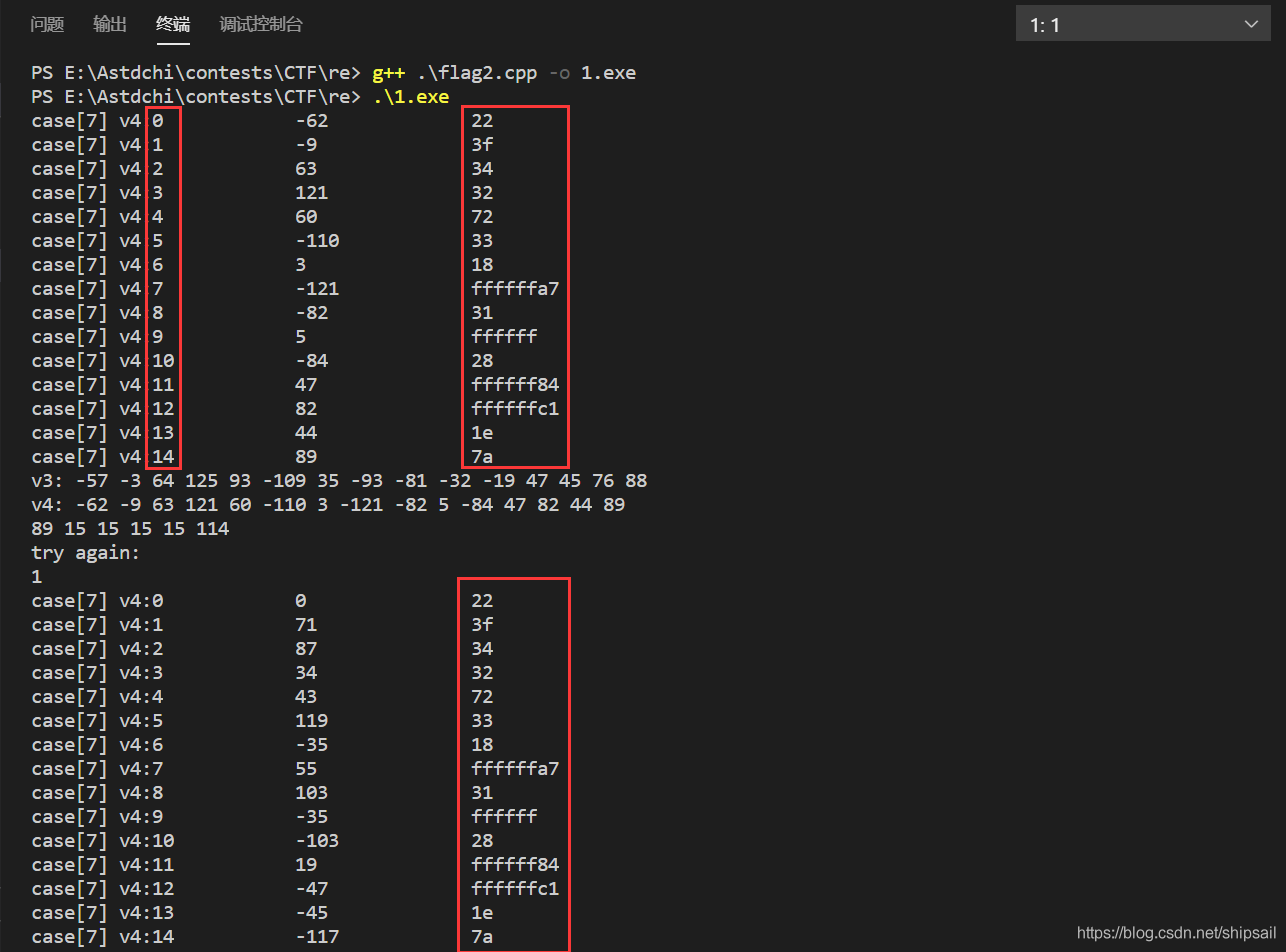
case7 The output of v4 Validation value of each element array[v10 + 1] Is constant , This is equivalent to what we know v4 Array , and v4 Is in case 1 The value assigned in is v5, among 0xffffff I don't know why the display is incomplete , stay OD His value is 0xfffffff1
v4 = {
0x22,0x3f,0x34,0x32,0x72,0x33,0x18,0xffffffa7,0x31,0xf1,0x28,0xffffff84,0xffffffc1,0x1e,0x7a};
Now we have to focus on V5
0x6 Debugging calculation V5
#include<iostream>
#include<windows.h>
#include<string>
using namespace std;
size_t read(char *array)
{
for(int i=0;i<15;i++){
array[i] = rand() * 255;
}
return 15;
size_t result; // eax
printf("string:");
scanf("%s", array);
result = strlen(array);
if ( result != 15 )
{
puts("WRONG!\n");
exit(0);
}
return result;
}
void displayV9V10(int _case ,int v9,int v10){
return;
printf("case %d\tv9=%d\tv10=%d\n",_case,v9,v10);
}
int vm_operad(unsigned int *array, int a2)
{
int result; // eax
char v3[100]; // [esp+13h] [ebp-E5h]
char v4[100]; // [esp+77h] [ebp-81h]
char v5; // [esp+DBh] [ebp-1Dh]
int v6; // [esp+DCh] [ebp-1Ch]
int v7; // [esp+E0h] [ebp-18h]
int v8; // [esp+E4h] [ebp-14h]
int v9; // [esp+E8h] [ebp-10h]
int v10; // [esp+ECh] [ebp-Ch]
v10 = 0;
v9 = 0;
v8 = 0;
v7 = 0;
v6 = 0;
while ( 1 )
{
result = v10;
if ( v10 >= a2 ){
// cout << "v3: ";
// for(int i = 0; v3[i] != '\0';i++){
// cout << int(v3[i]) << " ";
// }
// cout << endl;
// cout << "v4: ";
// for(int i = 0; v4[i] != '\0';i++){
// cout << int(v4[i]) << " ";
// }
// cout << endl;
// cout << int(v5) << " "<<v6<<" "<<v7<<" "<<v8<<" "<<v9<<" "<<v10<<endl;
return result;
}
switch ( array[v10] )
{
case 0:
case 9:
continue;
case 1:
displayV9V10(1,v9,v10);
printf("v4[%d] = v5; \n\n\n",v7);
v4[v7] = v5;
++v10;
++v7;
++v9;
break;
case 2:
displayV9V10(2,v9,v10);
printf("v5 = array[%d] + v3[%d]; \n",v10 + 1,v9);
v5 = array[v10 + 1] + v3[v9];
v10 += 2;
break;
case 3:
displayV9V10(3,v9,v10);
printf("v5 = v3[%d] - LOBYTE(array[%d]); \n",v9 ,v10 + 1);
v5 = v3[v9] - LOBYTE(array[v10 + 1]);
v10 += 2;
break;
case 4:
displayV9V10(4,v9,v10);
printf("v5 = array[%d] ^ v3[%d]; \n",v10 + 1,v9);
v5 = array[v10 + 1] ^ v3[v9];
v10 += 2;
break;
case 5:
displayV9V10(5,v9,v10);
printf("v5 = array[%d] * v3[%d]; \n",v10 + 1,v9);
v5 = array[v10 + 1] * v3[v9];
v10 += 2;
break;
case 6:
++v10;
break;
case 7:
// Output verification information
cout << "case[7] " << "v4:" << v8 << "\t\t" << int(v4[v8]) << "\t\t" << int(array[v10 + 1]) <<endl << dec;
if ( v4[v8] != array[v10 + 1] )
{
// printf("what a shame...");
// exit(0);
}
++v8;
v10 += 2;
break;
case 8:
displayV9V10(8,v9,v10);
printf("v3[%d] = v5; \n",v6);
v3[v6] = v5;
++v10;
++v6;
break;
case 10:
read(v3);
++v10;
break;
case 11:
displayV9V10(11,v9,v10);
printf("v5 = v3[%d] - 1; \n",v9);
v5 = v3[v9] - 1;
++v10;
break;
case 12:
displayV9V10(12,v9,v10);
printf("v5 = v3[%d] + 1; \n",v9);
v5 = v3[v9] + 1;
++v10;
break;
}
}
}
int main(){
unsigned int a[] ={
0x0A,0x04,0x10,0x08,0x03,0x05,0x01,0x04,0x20,0x08,0x05,0x03,0x01,0x03,0x02,0x08,0x0B,0x01,0x0C,0x08,0x04,0x04,0x01,0x05,0x03,0x08,0x03,0x21,0x01,0x0B,0x08,0x0B,0x01,0x04,0x09,0x08,0x03,0x20,0x01,0x02,0x51,0x08,0x04,0x24,0x01,0x0C,0x08,0x0B,0x01,0x05,0x02,0x08,0x02,0x25,0x01,0x02,0x36,0x08,0x04,0x41,0x01,0x02,0x20,0x08,0x05,0x01,0x01,0x05,0x03,0x08,0x02,0x25,0x01,0x04,0x09,0x08,0x03,0x20,0x01,0x02,0x41,0x08,0x0C,0x01,0x07,0x22,0x07,0x3F,0x07,0x34,0x07,0x32,0x07,0x72,0x07,0x33,0x7,0x18,0x7,0xffffffa7,0x7,0x31,0x7,0xffffff,0x7,0x28,0x7,0xffffff84,0x7,0xffffffc1,0x7,0x1e,0x7,0x7a};
int test;
while(1){
unsigned int *b = new unsigned int[114];
for(int i = 0; i < 114;i++)
b[i] = a[i];
vm_operad(b,114);
delete [] b;
cout <<"input a int to try again:"<<endl;
cin >> test;
}
return 0;
}
Print operation V5 Of case and case 1
because V4 It is known that , So we can find the corresponding V3, The following is the calculation process of print acquisition
v5 = array[2] ^ v3[0];
v3[0] = v5;
v5 = v3[0] - LOBYTE(array[5]);
v4[0] = v5;
v5 = array[8] ^ v3[1];
v3[1] = v5;
v5 = array[11] * v3[1];
v4[1] = v5;
v5 = v3[2] - LOBYTE(array[14]);
v3[2] = v5;
v5 = v3[2] - 1;
v4[2] = v5;
v5 = v3[3] + 1;
v3[3] = v5;
v5 = array[21] ^ v3[3];
v4[3] = v5;
v5 = array[24] * v3[4];
v3[4] = v5;
v5 = v3[4] - LOBYTE(array[27]);
v4[4] = v5;
v5 = v3[5] - 1;
v3[5] = v5;
v5 = v3[5] - 1;
v4[5] = v5;
v5 = array[34] ^ v3[6];
v3[6] = v5;
v5 = v3[6] - LOBYTE(array[37]);
v4[6] = v5;
v5 = array[40] + v3[7];
v3[7] = v5;
v5 = array[43] ^ v3[7];
v4[7] = v5;
v5 = v3[8] + 1;
v3[8] = v5;
v5 = v3[8] - 1;
v4[8] = v5;
v5 = array[50] * v3[9];
v3[9] = v5;
v5 = array[53] + v3[9];
v4[9] = v5;
v5 = array[56] + v3[10];
v3[10] = v5;
v5 = array[59] ^ v3[10];
v4[10] = v5;
v5 = array[62] + v3[11];
v3[11] = v5;
v5 = array[65] * v3[11];
v4[11] = v5;
v5 = array[68] * v3[12];
v3[12] = v5;
v5 = array[71] + v3[12];
v4[12] = v5;
v5 = array[74] ^ v3[13];
v3[13] = v5;
v5 = v3[13] - LOBYTE(array[77]);
v4[13] = v5;
v5 = array[80] + v3[14];
v3[14] = v5;
v5 = v3[14] + 1;
v4[14] = v5;
Write a script to calculate according to each piece of content above V3
#include<iostream>
#include<windows.h>
#include<string>
using namespace std;
int main(){
unsigned long array[] ={
0x0A,0x04,0x10,0x08,0x03,0x05,0x01,0x04,0x20,0x08,0x05,0x03,0x01,0x03,0x02,0x08,0x0B,0x01,0x0C,0x08,0x04,0x04,0x01,0x05,0x03,0x08,0x03,0x21,0x01,0x0B,0x08,0x0B,0x01,0x04,0x09,0x08,0x03,0x20,0x01,0x02,0x51,0x08,0x04,0x24,0x01,0x0C,0x08,0x0B,0x01,0x05,0x02,0x08,0x02,0x25,0x01,0x02,0x36,0x08,0x04,0x41,0x01,0x02,0x20,0x08,0x05,0x01,0x01,0x05,0x03,0x08,0x02,0x25,0x01,0x04,0x09,0x08,0x03,0x20,0x01,0x02,0x41,0x08,0x0C,0x01,0x07,0x22,0x07,0x3F,0x07,0x34,0x07,0x32,0x07,0x72,0x07,0x33,0x7,0x18,0x7,0xffffffa7,0x7,0x31,0x7,0xfffffff1,0x7,0x28,0x7,0xffffff84,0x7,0xffffffc1,0x7,0x1e,0x7,0x7a};
unsigned long v4[] = {
0x22,0x3f,0x34,0x32,0x72,0x33,0x18,0xffffffa7,0x31,0xf1,0x28,0xffffff84,0xffffffc1,0x1e,0x7a};
unsigned long v3[15];
v3[0] = (v4[0] + LOBYTE(array[5])) ^ array[2];
v3[1] = (v4[1] / array[11]) ^ array[8];
v3[2] = (v4[2] + 1) + LOBYTE(array[14]);
v3[3] = (v4[3] ^ array[21]) - 1;
v3[4] = (v4[4] + LOBYTE(array[27])) / array[24];
v3[5] = (v4[5] + 1) + 1;
v3[6] = (v4[6] + LOBYTE(array[37])) ^ array[34];
v3[7] = (v4[7] ^ array[43]) - array[40];
v3[8] = (v4[8] + 1) - 1;
v3[9] = (v4[9] - array[53]) / array[50];
v3[10] = (v4[10] ^ array[59]) - array[56];
v3[11] = (v4[11] / array[65]) - array[62];
v3[12] = (v4[12] - array[71]) / array[68];
v3[13] = (v4[13] + LOBYTE(array[77])) ^ array[74];
v3[14] = (v4[14] - 1) - array[80];
cout << "flag{";
for(int i=0;i<15;i++){
cout <<char(v3[i]);
}
cout<<"}";
return 0;
}

obtain Flag
0x7 summary
This problem is not like the usual problem to solve the algorithm itself , Because his branches are complex , So there should be internal laws .
边栏推荐
- Flink 解析(五):State与State Backend
- 吴军三部曲见识(四) 大家智慧
- Resume of a microservice architecture teacher with 10 years of work experience
- Programmer orientation problem solving methodology
- arithmetic operation
- Activiti directory (I) highlights
- Jetpack compose 1.1 release, based on kotlin's Android UI Toolkit
- Eight part essay that everyone likes
- 在 vi 编辑器中的命令模式下,删除当前光标处的字符使用 __ 命 令。
- Prototype chain inheritance
猜你喜欢
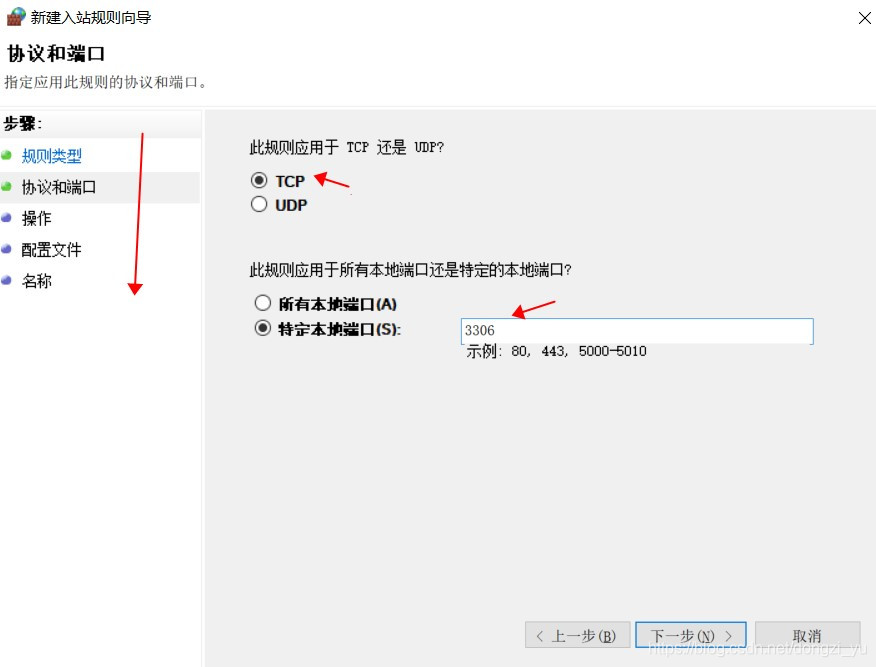
Connect to LAN MySQL

Some feelings of brushing leetcode 300+ questions

02个人研发的产品及推广-短信平台
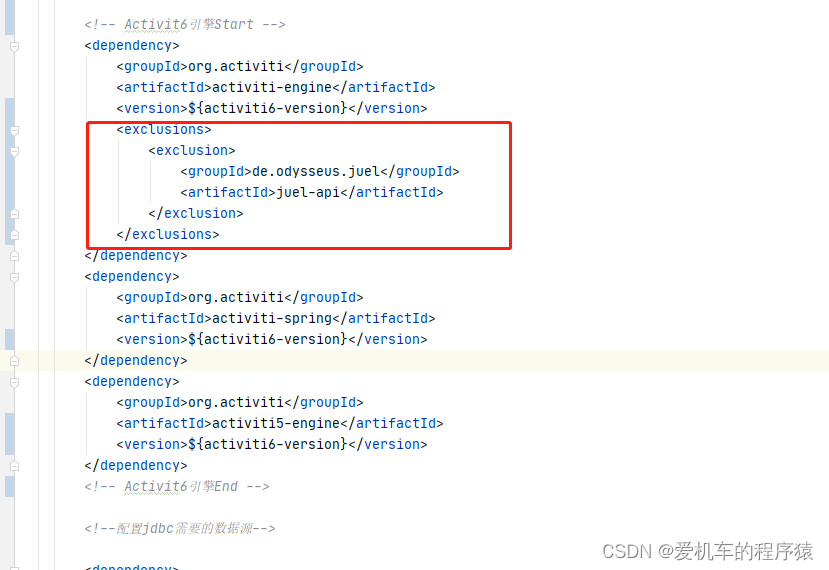
Activit fragmented deadly pit

Alibaba cloud server docker installation mysql5.5

Akamai浅谈风控原理与解决方案
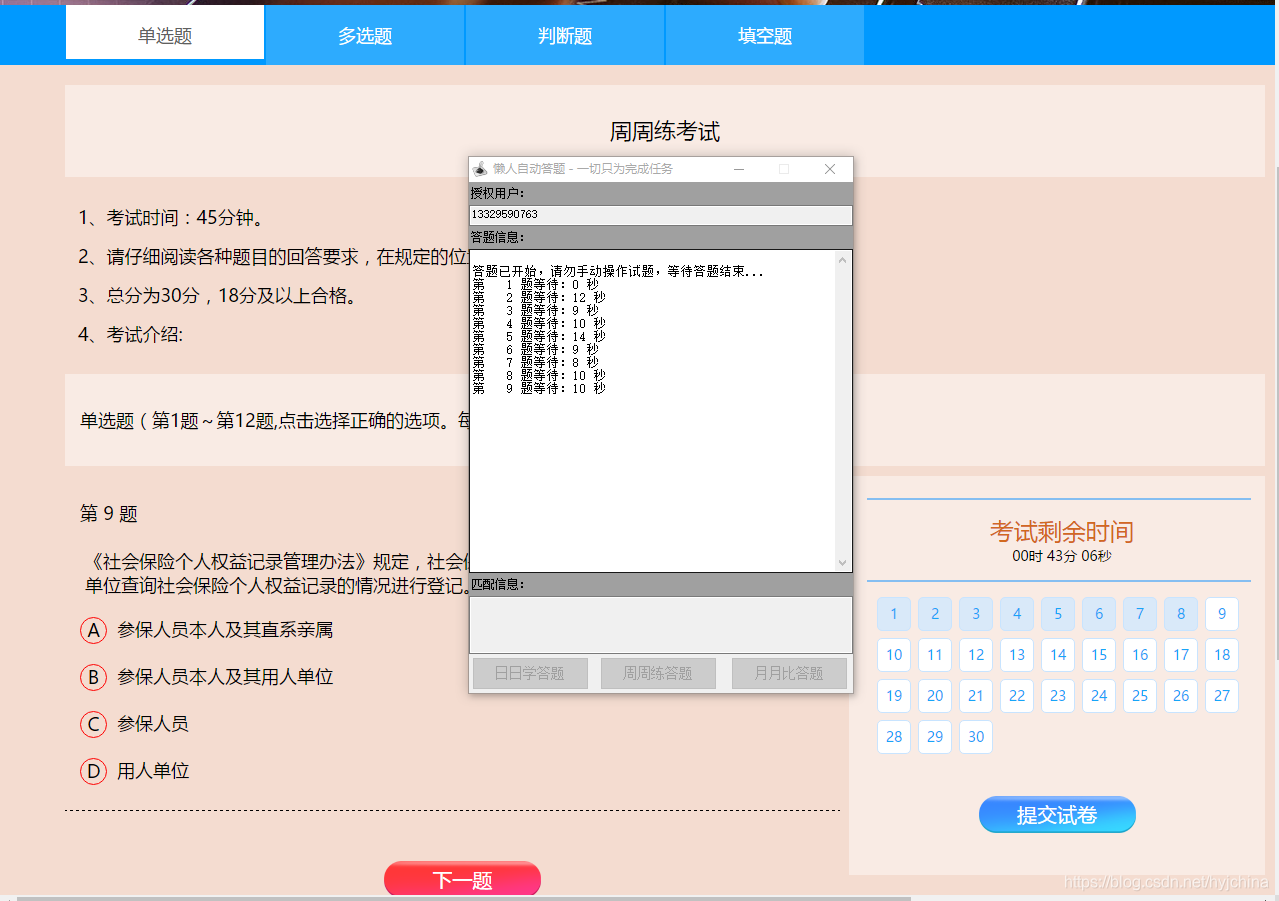
自动答题 之 Selenium测试直接运行在浏览器中,就像真正的用户在操作一样。
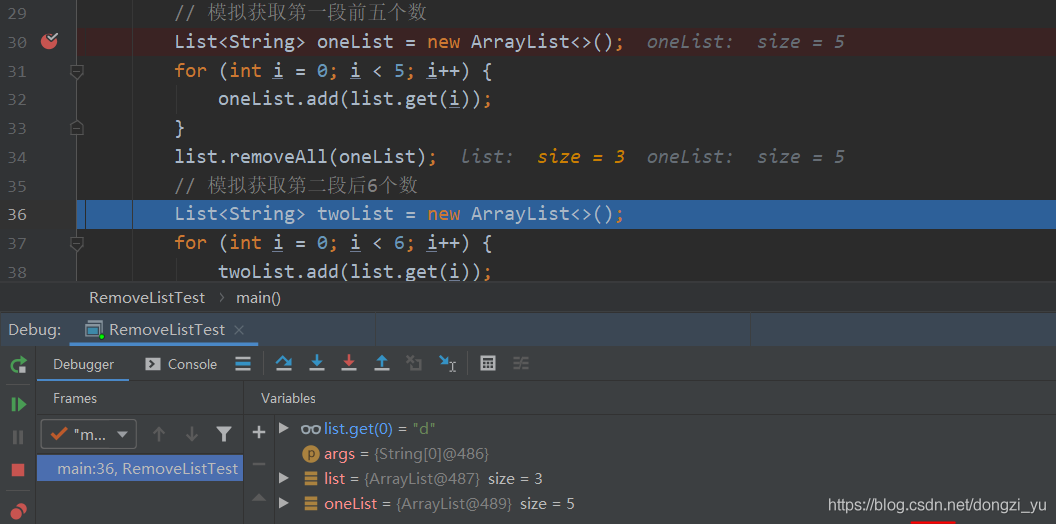
List集合数据移除(List.subList.clear)
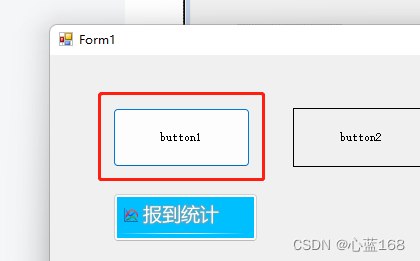
C# WinForm系列-Button简单使用

Final review of information and network security (based on the key points given by the teacher)
随机推荐
JS garbage collection mechanism and memory leakage
Resume of a microservice architecture teacher with 10 years of work experience
SQL调优小记
Prototype chain inheritance
MySQL字符串函数
8086 segmentation technology
Set up the flutter environment pit collection
Akamai talking about risk control principles and Solutions
Koa Middleware
【MMdetection】一文解决安装问题
唯有学C不负众望 TOP3 Demo练习
Instructions for Redux
吴军三部曲见识(七) 商业的本质
SQL tuning notes
Activiti directory (V) reject, restart and cancel process
TCP's three handshakes and four waves
Jetpack compose 1.1 release, based on kotlin's Android UI Toolkit
Flink源码解读(三):ExecutionGraph源码解读
信息与网络安全期末复习(完整版)
Case: check the empty field [annotation + reflection + custom exception]